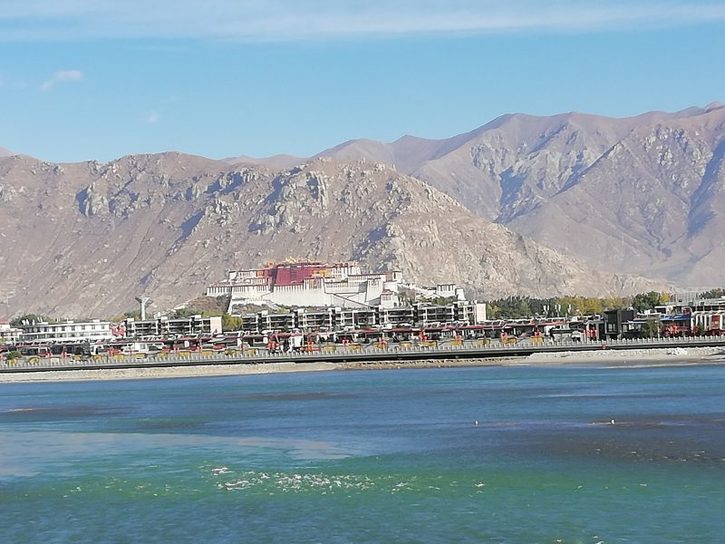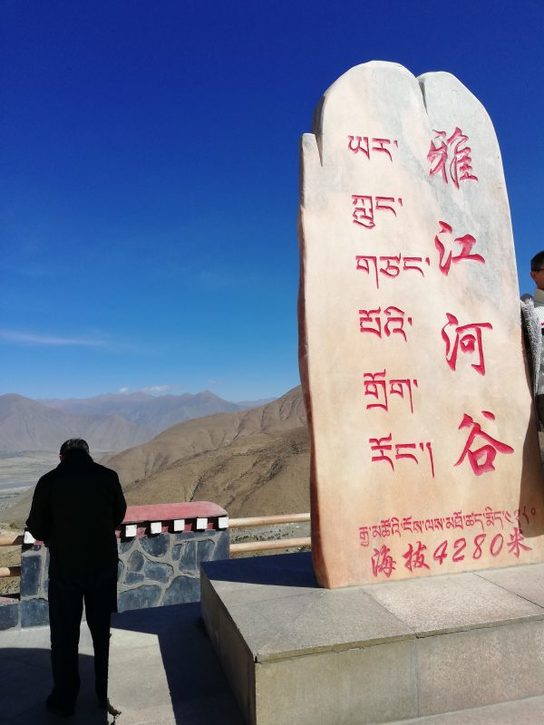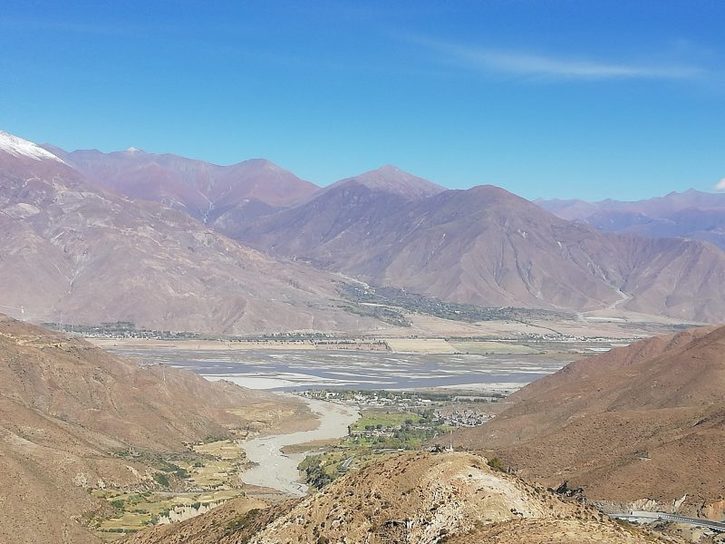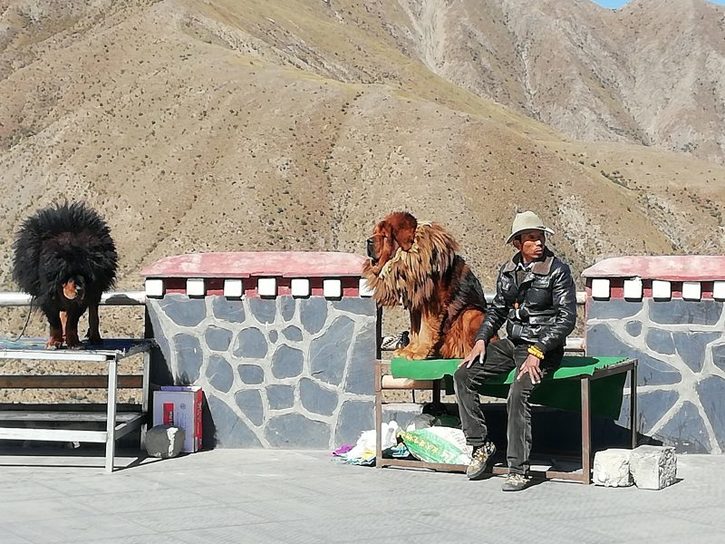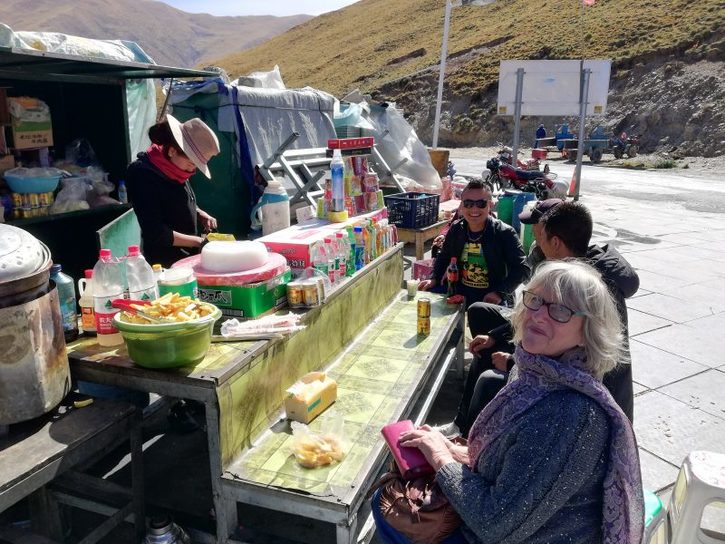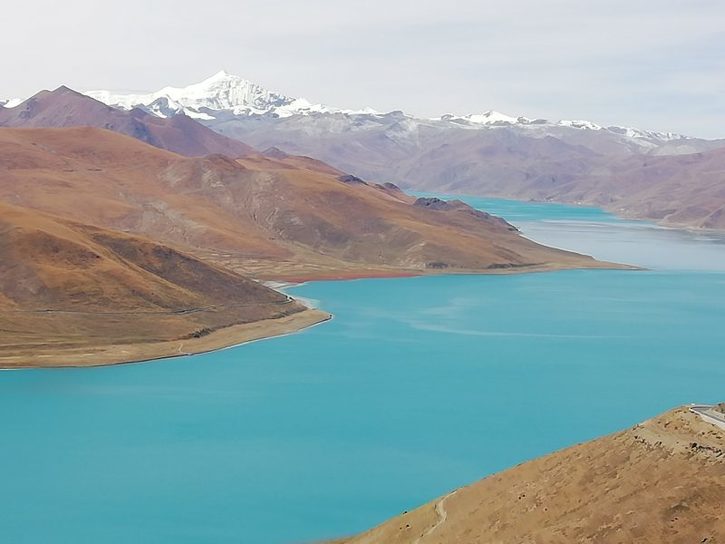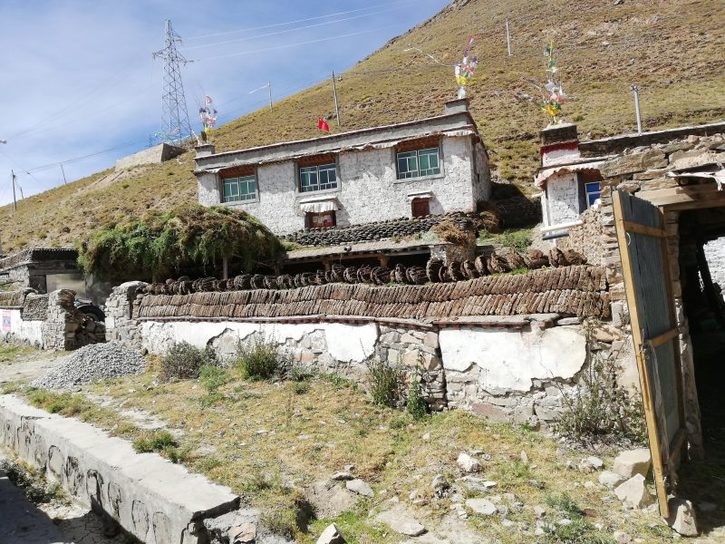The G318 runs to the north of the Yamdrok Tso (Turquoise Lake) so we took an alternative route to Shigatse, Tibet’s second largest city. It passed along the Airport Expressway and we were able to see the Potala from across the Kyichu (Lhasa River). The road followed the river through farmland where the farmers were ploughing the fields following the barley harvest and the valley was enclosed by rugged bare brown hills. Beautiful juniper trees with the leaves turning yellow lined the road. Eventually we reached the point where the Kyichu meets the Brahmaputra and the mass of prayer flags marks the point where people who have suffered a violent death are given a water burial. Most Tibetans have a sky burial while children are interred, monks are cremated and very important monks are intered in stupas.
The road then climbed up a large number of hairpins past farmers who were still collecting the stooks of barley in the field, with the harvest being presumably later at a higher altitude. Tuk-tuks laden high with barley stooks were travelling down the road to farmhouses in the valley, The houses were slightly different to those in eastern Tibet, although a similar design with fodder drying on the roof. A viewpoint at a height of 4,280 metres had Tibetan mastiffs with their owners expecting payment for tourists to have their pics taken. We had an excellent bag of chips.
The road continued upwards to the Kambala Pass at about 5,300 metres and then descended a short way until the dramatic Yamdrok Tso came into view. It is a brilliant deep blue whatever the weather on account of natural chemicals in the water. We descended to the side of the lake and then continued round it through farmland and small towns and villages with herds of cattle and yaks. Dinner was eaten at Mangertse town..
In the afternoon we travelled westwards up another pass and passed a glacier which I remember from 2014, but it had receded some way up the hill. The road was continuing along the river towards Shigatse until it widened where a dam had been created and a mass of prayer flags indicated a viewpoint. We didnt stop because we were getting behind schedule and eventually came to the small town of Gyantse where there is a massive fort built by Colonel Younghusband in 1904 after he had massacred the inhabitants and destroyed the beautiful chorten. The chorten has been rebuilt although we didnt have time to see it (I visited it in 2014) and a monument has been built at the spot where the massacre took place as the Tibetans tried to defend their monastery. There is also a monument of a horseman who lead the defence of the town.
A rather dreary road then took us to Shigatse which has expanded enormously since 2014 and we slept in a hotel carpark for £10. We went for a meal of momos at an adjacent restaurant in the evening.
